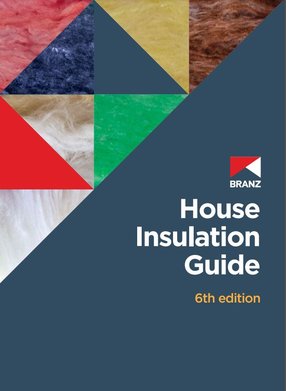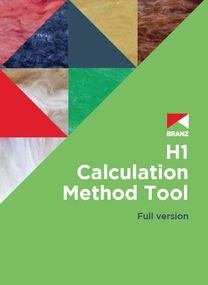
BRANZ House Insulation Guide 6th edition v2.7 ONLINE (03 December 2025)
Product Description
This Microsoft Excel (.xlxs) 25MB download of BRANZ House Insulation Guide 6th edition is for PC and MAC users of Microsoft 365 [ONLINE]
Updates:
- Further fix to error where the R-value for slab floors were higher than they should have been when adding floor topper insulation
- New images for timber framed floors
- A worksheet added which provides simplifications to help with calculation and modelling for steel framed walls
The guide is now in two parts:
- The tables of construction R-values for common construction options for compliance under H1/AS1 and H1/VM1 5th edition
- The accompanying House Insulation Guide text [PDF] for guidance on insulation to meet or exceed H1 AS/1 and H1/VM1 5th edition.
Once you have downloaded this version open it using Excel on Microsoft 365
| Publication date | 3 December 2025 |
|---|---|
| Product type | Download |
| Availability | Available |
| Product code | HIG_OL |
Recommended items
Webinar: H1 - Calculation method
The webinar covers:
- What the H1 Calculation method is and when to use it
- Reference houses and how these are calculated
- The advantages, disadvantages and limitations of the calculation method
- Tricks + tips how to make it useful
- How to use and verify the output.
- Please note: that access to this webstream will expire after 1 month.
BRANZ Calculation Method Tool v9 Full (December 2025)
This Microsoft Excel (.xlsx) tool automatically applies the calculation method of H1/AS1 6th edition and generates a results page that can be used to demonstrate compliance.
Features:
- Introduction
- Project details
- Slab floors
- Other floors
- Roof
- Skylights
- Walls
- Glazing (walls and doors)
- Doors (opaque)
- Results
More information here.
Webinar: H1 - Windows, doors and skylights
This BRANZ webinar, in partnership with the Window and Glass Association of New Zealand (WGANZ), brings together experts from BRANZ, WGANZ and MBIE to explain the compliance requirements in H1/AS1 5th edition amendment 1.
Please note: that access to this webstream will expire after 1 month.
Webinar: H1 Floor
In this BRANZ webinar, we explain the requirements when using H1/AS1 and H1/VM1 5th edition amendment 1 as a means of compliance, covering both slab-on-ground and suspended timber floors. We look at some of the challenges and risks, and provide solutions for meeting the required thermal resistance requirements for floors.
Please note: that access to this webstream will expire after 1 month
Webinar: H1 Roofs
In this BRANZ webinar, we focus on H1/AS1 and H1/VM1. We look at some of the risks and challenges and provide practical solutions for dealing with these.
Please note: that access to this webstream will expire after 1 month.




